While your company’s brand is the most important differentiator when it comes to beating out competitors and winning a customer’s business, it’s important to remember that there is no magic lever you can pull. Ultimately, building a brand and growing a business requires the careful planning and directing of a variety of marketing activities. That’s why it’s essential that you develop a cohesive marketing strategy that holds these activities together and focuses your team around completing common goals.
To quote author and leadership professor Lee Bolman: “A vision without a strategy remains an illusion.”
In this section, our experts share their tips for developing a well-defined marketing strategy. From building ideal customer profiles, to finding the perfect co-marketing partners, to creating a demand generation portfolio, you’ll learn how to craft a detailed plan that guides you toward measurable and predictable growth.
Experts quoted in this section:
This Is Why You Should Never Sell to the Wrong Customers
 Especially in the early days, turning away sales is difficult. But no amount of cash can make up for selling to the wrong customers.
Especially in the early days, turning away sales is difficult. But no amount of cash can make up for selling to the wrong customers.
If you get someone to purchase your product who isn’t your ideal customer—meaning they won’t get value or see success from using it—they’re going to destroy your business. They’re going to:
- Create an insane amount of support needs and noise
- Bombard you with feature requests and try to influence your product roadmap in a direction you shouldn’t take
- Complain and add a lot of negativity to your culture and team
- Inevitably, they’re going to churn. And worst of all, they’re not going to go quietly. They’re going to tweet about you, write a blog post about their bad experience, and tell anyone who will listen how terrible your product is.
I feel like I need to say it again… Taking money from the wrong customer can kill your company and your brand.
SOURCE
How to Find (and Win Over) the Perfect Marketing Partners
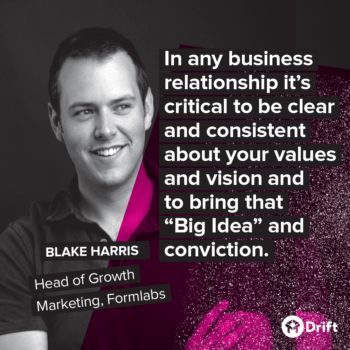 In any business relationship it’s critical to be clear and consistent about your values and your vision, to know who you are and what you stand for, and to bring that “Big Idea” and conviction into the relationship.
In any business relationship it’s critical to be clear and consistent about your values and your vision, to know who you are and what you stand for, and to bring that “Big Idea” and conviction into the relationship.
In order to tell a bigger story that resonates, you need to treat the partnership like a sale, applying the same process you use to learn about your customers — their mindset, needs, goals, etc. You then need to find the points of alignment between those needs and the solution your partnership will provide.
Once you have their attention and sell them on the vision, it’s time to provide prospective partners with more information to gain their trust.
In addition to sharing the front-facing story, it’s important to address logistical and risk-mitigation concerns by sharing your company’s back story, explaining in credible detail how you’re building your business, and offering clear examples of how you add value. If you can tie all these pieces together, you can make a strong case for a partnership.
SOURCE
Creating a Demand Generation Portfolio
 After a startup establishes product market fit, scaling demand generation marketing becomes the next major challenge. Doubling or tripling ARR each year for several consecutive years is not easy. The best marketers create a demand generation portfolio. There are four axes to measure this portfolio: scale of investment, sophistication, breadth and potential.
After a startup establishes product market fit, scaling demand generation marketing becomes the next major challenge. Doubling or tripling ARR each year for several consecutive years is not easy. The best marketers create a demand generation portfolio. There are four axes to measure this portfolio: scale of investment, sophistication, breadth and potential.
A demand generation portfolio might include search engine optimization, search engine marketing, social media marketing, influencer marketing, conferences/events, referral marketing, branding, partnerships, reseller agreements, outbound sales development, channel activation, analyst relations, and so on.
How can one manage a broad and growing portfolio? By measuring them on those four axes.
1. Sophistication
How sophisticated is the organization in leveraging the channel? How much experimentation, insight, predictability has the team developed?
2. Breadth
How broad is the demand generation strategy? How many campaigns, how many creatives, how many partners, how many referrers
3. Potential
How many customers and much revenue could this channel bring if successful?
4. Scale of investment
How large is the business’ investment in the customer acquisition channel? What is the spend on the people, software and media?
SOURCE
The Importance of Marketing Partners
 …when you look at the percent of revenue that comes from direct vs partners, based on data from the World Trade Organization (WTO) about all the revenue floating around the planet, it’s really 75:25 from partners versus from direct. The vast majority of revenue comes from affiliates, influencers, brand-to-brand relationships.
…when you look at the percent of revenue that comes from direct vs partners, based on data from the World Trade Organization (WTO) about all the revenue floating around the planet, it’s really 75:25 from partners versus from direct. The vast majority of revenue comes from affiliates, influencers, brand-to-brand relationships.
Over the last 20-30 years, from a martech standpoint, the focus has been on optimization of the 25%. Starting with 10-15 years of CRM, then the recent 10 years of marketing automation. And now the third wave is that we’re seeing a lot of companies saying, “okay, I’ve done a lot of optimization on that 25%. Now I need to do the 75%.” The 25% is easier. It’s captive, it’s in your control. It’s your in-house team.
SOURCE
Why Giving Away Porsches Isn’t a Viable Growth Strategy
 People who have huge budgets get great experiences. And that’s because sellers know that when you walk into that kind of shop, they predict that your fit is very high, and that you have the means, and so they are investing the time of those awesome salespeople — relationship managers — on you, because they know that about you.
People who have huge budgets get great experiences. And that’s because sellers know that when you walk into that kind of shop, they predict that your fit is very high, and that you have the means, and so they are investing the time of those awesome salespeople — relationship managers — on you, because they know that about you.
And the problem is that in our world, or the internet world, we don’t know anything, and so we’re not investing anything. So the answer to marketing these past ten years hasn’t been to improve the experience, it has been to decrease the cost — to massively decrease the cost so they can create yield.
But here’s the thing: My job isn’t to generate a ton of leads, it’s not to generate a ton of sales whatever the cost. Because I can offer a Porsche to every person who comes to Drift — this is not happening, I’m not offering a Porsche — but say that I did. Of course people would convert and I’d have sales. But the yield would be negative. My job is to generate the max yield, in dollars, that’s my job.
And the answer from people like me in these past years has been to decrease the cost to improve that yield. The problem is that decreasing the cost creates awful, sh*tty experiences. That’s the problem.
SOURCE
Drive the right business impact with customer marketing
 1. Set up a framework for your organization.
1. Set up a framework for your organization.
How are you organizing customer marketing? It shouldn’t just be advocacy. For example, at many organizations advocacy exists but there is no dedicated marketing energy to adoption, retention, and expansion. Understand what moves the needle the MOST for your business and make sure there is focus on it. Advocacy is great, but not if adoption is broken.
2. Have clear goals for customer marketing.
For example, say your company is introducing a new product. As part of your Plan of Record (POR) there should be a cross-sell goal that that team is incentivized to hit (marketing and sales).
3. Segment and prioritize your customers – they are not all the same.
Marketers do a nice job with segmentation for acquisition, but this same discipline sometimes drops off with customers. Segment based on health, company size, role.
SOURCE
The Biggest Mistake Marketing Teams Make When Launching New Programs
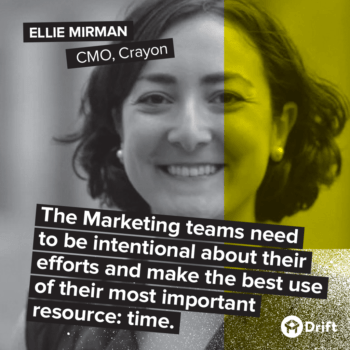 The biggest mistake I see is not thinking through the goals of the launch itself. Each type of program launch – from an ebook campaign to a customer advocacy program – can serve a variety of goals. Without articulating the aim of each program, you lose the needed direction for the campaign and won’t know if the campaign was a success.
The biggest mistake I see is not thinking through the goals of the launch itself. Each type of program launch – from an ebook campaign to a customer advocacy program – can serve a variety of goals. Without articulating the aim of each program, you lose the needed direction for the campaign and won’t know if the campaign was a success.
Each program rollout should include a planning phase where the goals, action items, and milestones, are set out at the start. Then, at the end of the campaign (or at least a predefined checkpoint), there should be a recap phase where the team reports on the results and does a retrospective on what worked and what didn’t. This helps marketing teams be a lot more intentional about their efforts and make the best use of their most important resource: time.
SOURCE
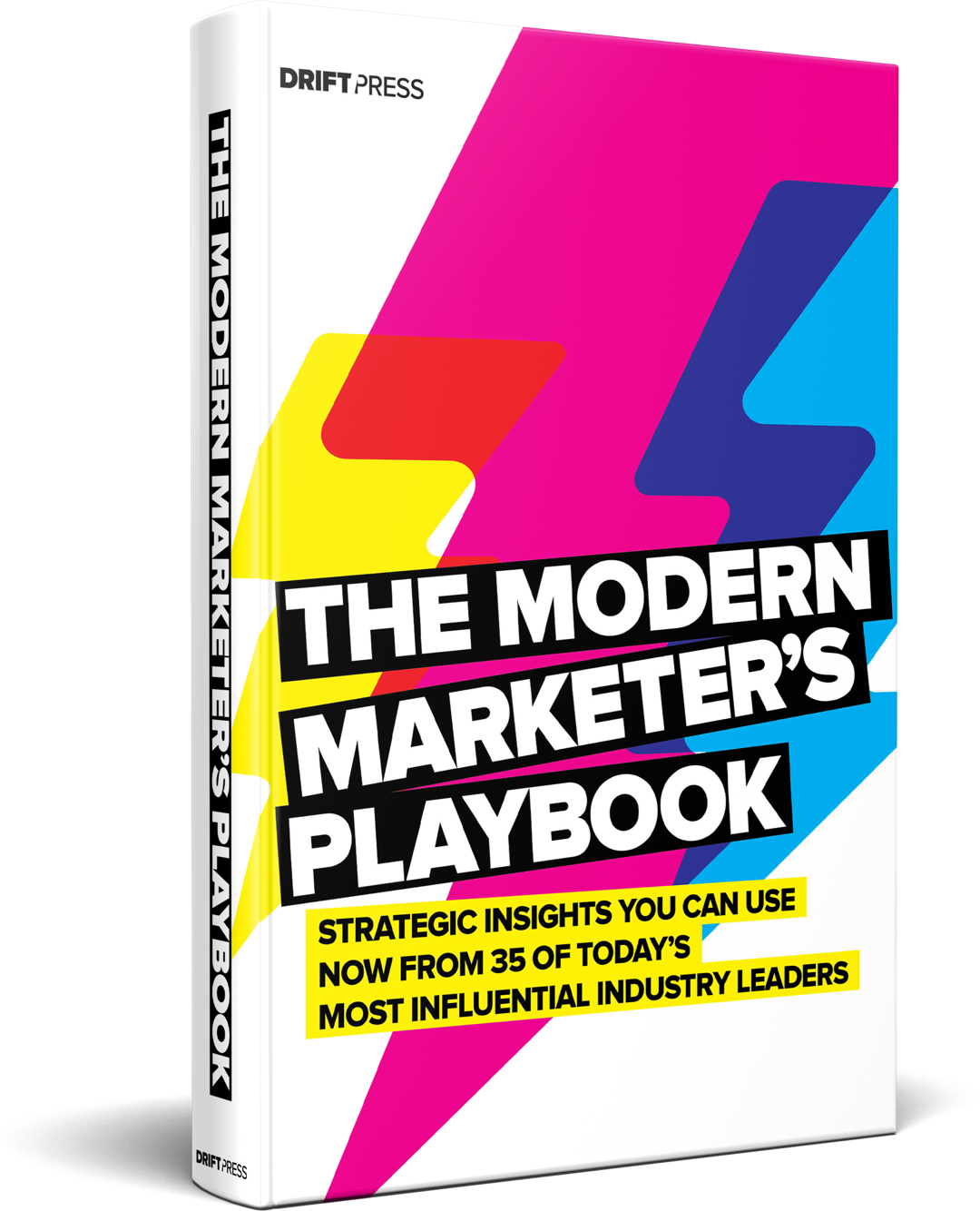




 What we’re seeing is an evolution in how a brand shows up in the world to now include every touchpoint that somebody might have with a company. Everything from what it looks like to show up in a physical office space to interacting with sales or speaking with customer support.
What we’re seeing is an evolution in how a brand shows up in the world to now include every touchpoint that somebody might have with a company. Everything from what it looks like to show up in a physical office space to interacting with sales or speaking with customer support.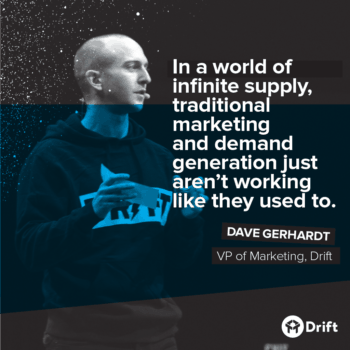 Every company has a blog and a podcast. Every company is making videos. Every company is spending money on AdWords, Facebook ads, and retargeting. And on top of that, there are hundreds (if not thousands) of competitors in every industry leaving more options for your potential customers than ever before.
Every company has a blog and a podcast. Every company is making videos. Every company is spending money on AdWords, Facebook ads, and retargeting. And on top of that, there are hundreds (if not thousands) of competitors in every industry leaving more options for your potential customers than ever before.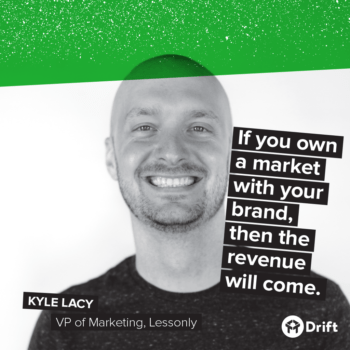 If you own a market with your brand, then the revenue will come. Because people want to buy from people they like. They don’t want to buy because they got a discount. And they might initially buy for a discount, but they will always pay more if they like you. And if your brand can tell that story and a Google Ad [is] where [you] can get them in, you have to have both.
If you own a market with your brand, then the revenue will come. Because people want to buy from people they like. They don’t want to buy because they got a discount. And they might initially buy for a discount, but they will always pay more if they like you. And if your brand can tell that story and a Google Ad [is] where [you] can get them in, you have to have both. It doesn’t matter whether your objective is to mold a professional services business on your own or to build a small venture that employs others who believe in your mission. Designing a unique and distinct category niche is the biggest step that any entrepreneur — whether she is going it alone or leading others — can take towards successfully carving out territory in the minds of the audience she wants to attract.
It doesn’t matter whether your objective is to mold a professional services business on your own or to build a small venture that employs others who believe in your mission. Designing a unique and distinct category niche is the biggest step that any entrepreneur — whether she is going it alone or leading others — can take towards successfully carving out territory in the minds of the audience she wants to attract. After many years of helping startups define their brands, here’s what I believe the four P’s of successful brand building are:
After many years of helping startups define their brands, here’s what I believe the four P’s of successful brand building are: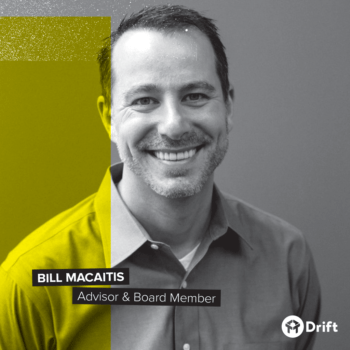 Being true to your values is critical, but you need to choose those values. At Slack, we wanted to be human, empathetic, courteous and even funny. These values worked because they reflected who we really were and we made sure to stay true to them. You have to act like that, you have to be like that. I want a brand that I can have a connection with, and that starts with authenticity.
Being true to your values is critical, but you need to choose those values. At Slack, we wanted to be human, empathetic, courteous and even funny. These values worked because they reflected who we really were and we made sure to stay true to them. You have to act like that, you have to be like that. I want a brand that I can have a connection with, and that starts with authenticity.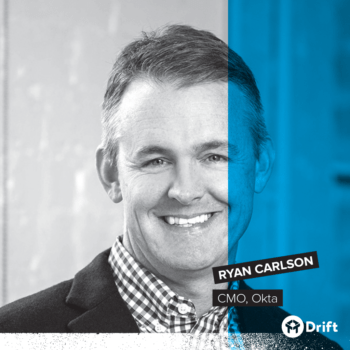 We realized that as we had grown to over 800 people, if you asked 20 people around the company, “Tell me about Okta,” you would likely get 20 great but very different answers. We spent something like five or six months generating 700 pages of interview transcripts with employees, with customers, with partners, trying to understand that story. We then had to distill that down into something that everybody could speak to in the same way. It was really very helpful for us.
We realized that as we had grown to over 800 people, if you asked 20 people around the company, “Tell me about Okta,” you would likely get 20 great but very different answers. We spent something like five or six months generating 700 pages of interview transcripts with employees, with customers, with partners, trying to understand that story. We then had to distill that down into something that everybody could speak to in the same way. It was really very helpful for us. Especially in the early days, turning away sales is difficult. But no amount of cash can make up for selling to the wrong customers.
Especially in the early days, turning away sales is difficult. But no amount of cash can make up for selling to the wrong customers. In any business relationship it’s critical to be clear and consistent about your values and your vision, to know who you are and what you stand for, and to bring that “Big Idea” and conviction into the relationship.
In any business relationship it’s critical to be clear and consistent about your values and your vision, to know who you are and what you stand for, and to bring that “Big Idea” and conviction into the relationship. After a startup establishes product market fit, scaling
After a startup establishes product market fit, scaling  …when you look at the percent of revenue that comes from direct vs partners, based on data from the World Trade Organization (WTO) about all the revenue floating around the planet, it’s really 75:25 from partners versus from direct. The vast majority of revenue comes from affiliates, influencers, brand-to-brand relationships.
…when you look at the percent of revenue that comes from direct vs partners, based on data from the World Trade Organization (WTO) about all the revenue floating around the planet, it’s really 75:25 from partners versus from direct. The vast majority of revenue comes from affiliates, influencers, brand-to-brand relationships. People who have huge budgets get great experiences. And that’s because sellers know that when you walk into that kind of shop, they predict that your fit is very high, and that you have the means, and so they are investing the time of those awesome salespeople — relationship managers — on you, because they know that about you.
People who have huge budgets get great experiences. And that’s because sellers know that when you walk into that kind of shop, they predict that your fit is very high, and that you have the means, and so they are investing the time of those awesome salespeople — relationship managers — on you, because they know that about you. 1. Set up a framework for your organization.
1. Set up a framework for your organization. The biggest mistake I see is not thinking through the goals of the launch itself. Each type of program launch – from an ebook campaign to a customer advocacy program – can serve a variety of goals. Without articulating the aim of each program, you lose the needed direction for the campaign and won’t know if the campaign was a success.
The biggest mistake I see is not thinking through the goals of the launch itself. Each type of program launch – from an ebook campaign to a customer advocacy program – can serve a variety of goals. Without articulating the aim of each program, you lose the needed direction for the campaign and won’t know if the campaign was a success.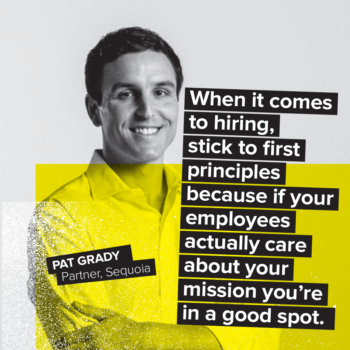 Stick to first principles, because if your employees actually care about your mission and if your customers are going to buy your products regardless of whether or not their budget is big or small, you’re in a good spot.
Stick to first principles, because if your employees actually care about your mission and if your customers are going to buy your products regardless of whether or not their budget is big or small, you’re in a good spot.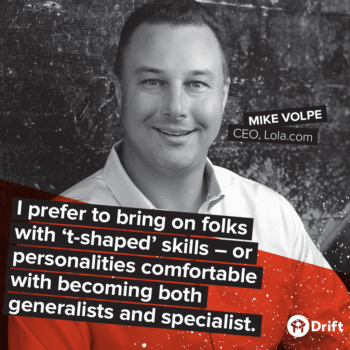 First, when it comes to marketing, it’s hard to have long-term plans, and it’s difficult to map out all the moving parts ahead of time. It’s important to stay responsive to what’s going on in sales, the market, and the world as a whole for your strategies to succeed. For this reason, it’s critical to stay agile.
First, when it comes to marketing, it’s hard to have long-term plans, and it’s difficult to map out all the moving parts ahead of time. It’s important to stay responsive to what’s going on in sales, the market, and the world as a whole for your strategies to succeed. For this reason, it’s critical to stay agile.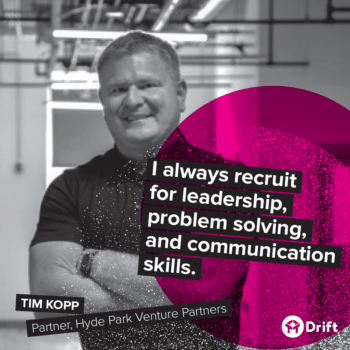 I don’t know that hiring somebody out of school with a marketing degree is super helpful, to be honest, at least for the way I think about marketing.
I don’t know that hiring somebody out of school with a marketing degree is super helpful, to be honest, at least for the way I think about marketing.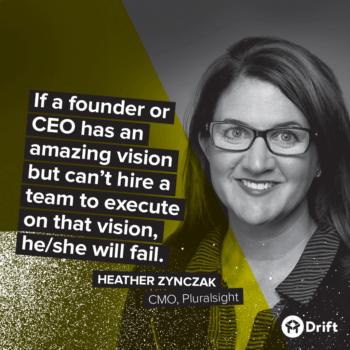 One thing that has become abundantly clear to me as I’ve worked my way up the corporate ladder is that hiring a talented team is the key to success as a senior executive. Some of the most successful CEOs I know would argue this is their BEST skill. If a founder or CEO has an amazing vision but can’t hire a team to execute on that vision, he/she will fail.
One thing that has become abundantly clear to me as I’ve worked my way up the corporate ladder is that hiring a talented team is the key to success as a senior executive. Some of the most successful CEOs I know would argue this is their BEST skill. If a founder or CEO has an amazing vision but can’t hire a team to execute on that vision, he/she will fail.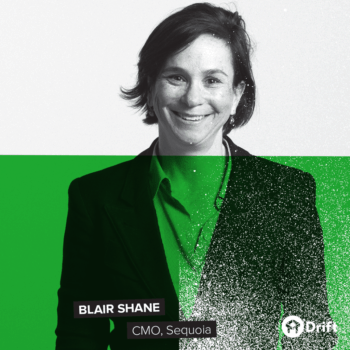 Openness to me means being curious and listening to different perspectives and ideas. It’s about embracing not knowing, and seeking context whenever I join a meeting or a project to understand the different angles and inputs that can inform my decisions. I tend to be a pretty fast-paced thinker and decision maker, so I remind myself not to close out options too quickly.
Openness to me means being curious and listening to different perspectives and ideas. It’s about embracing not knowing, and seeking context whenever I join a meeting or a project to understand the different angles and inputs that can inform my decisions. I tend to be a pretty fast-paced thinker and decision maker, so I remind myself not to close out options too quickly.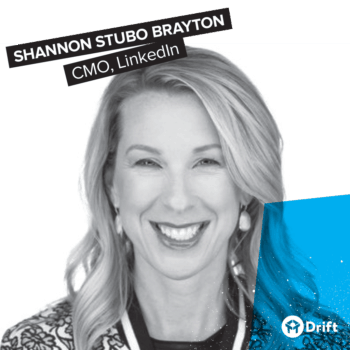 During the recruiting process, the internal comms team should already be involved in what that experience looks and feels like—everything from the emails you get from the hiring manager or the recruiter to what kind of paperwork you get before you come in. You want candidates to experience a consistent brand from the very beginning, whether you hire them or not.
During the recruiting process, the internal comms team should already be involved in what that experience looks and feels like—everything from the emails you get from the hiring manager or the recruiter to what kind of paperwork you get before you come in. You want candidates to experience a consistent brand from the very beginning, whether you hire them or not. Break down all of your marketing channels, landing pages, and content along the following two dimensions: traffic and conversion rate. Then, categorize them all into one of four quadrants:
Break down all of your marketing channels, landing pages, and content along the following two dimensions: traffic and conversion rate. Then, categorize them all into one of four quadrants: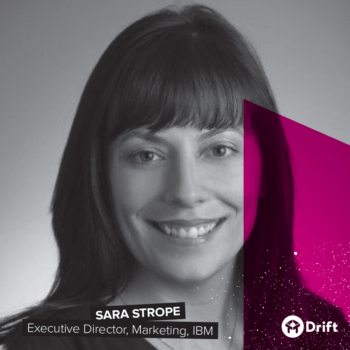 I’ve logged over 300 miles in running races over 8 years, and just in this past year started to see some small improvements in my 5ks and half marathons. Suddenly, I started asking, “How much faster could I run a half marathon? Could I translate these improvements to longer distances?
I’ve logged over 300 miles in running races over 8 years, and just in this past year started to see some small improvements in my 5ks and half marathons. Suddenly, I started asking, “How much faster could I run a half marathon? Could I translate these improvements to longer distances? This past June we released the results of a survey of more than 500 marketing leaders covering marketing metrics, demand gen channel strategy and its effectiveness, tech stack, organizational structure and more. The respondents ranged from seed to growth stage executives, but the vast majority were expansion stage software leaders.
This past June we released the results of a survey of more than 500 marketing leaders covering marketing metrics, demand gen channel strategy and its effectiveness, tech stack, organizational structure and more. The respondents ranged from seed to growth stage executives, but the vast majority were expansion stage software leaders. The strategic and operational downside of closed ecosystems is that
The strategic and operational downside of closed ecosystems is that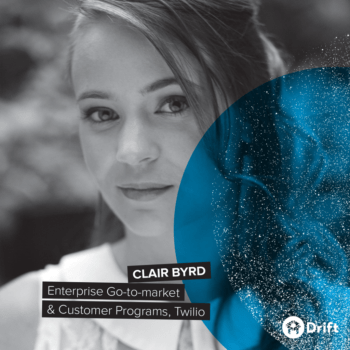 I think content marketing isn’t going to be whitepapers and blog posts for very much longer.
I think content marketing isn’t going to be whitepapers and blog posts for very much longer. We are in a constant battle for attention. In today’s always-on world, the average human now loses focus within eight seconds (meaning we now have a shorter attention span than a goldfish). This translates to faster drop-off rates for videos. So, if you don’t capture your audience’s attention in that first few seconds, you’ve lost your chance with a potential customer. Higher engagement is also important for making sure your videos get seen in the first place since Facebook and other platforms use engagement to prioritize videos in their feed.
We are in a constant battle for attention. In today’s always-on world, the average human now loses focus within eight seconds (meaning we now have a shorter attention span than a goldfish). This translates to faster drop-off rates for videos. So, if you don’t capture your audience’s attention in that first few seconds, you’ve lost your chance with a potential customer. Higher engagement is also important for making sure your videos get seen in the first place since Facebook and other platforms use engagement to prioritize videos in their feed.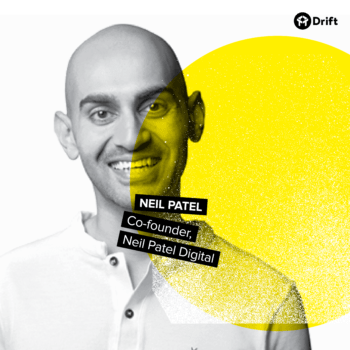 Branding is important no matter the marketing channel. Many features for branding your YouTube channel are free and should be taken full advantage of. Customizing the background of your channel, showcasing your other social networks and creating a custom header are just a few of the many ways to brand your presence on YouTube.
Branding is important no matter the marketing channel. Many features for branding your YouTube channel are free and should be taken full advantage of. Customizing the background of your channel, showcasing your other social networks and creating a custom header are just a few of the many ways to brand your presence on YouTube.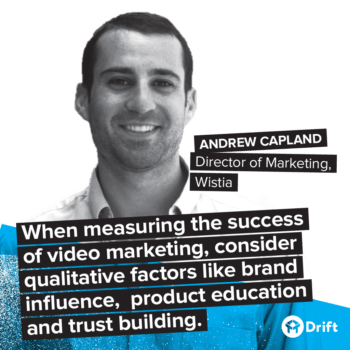 Metrics like impressions, play rate, and viewer engagement are table-stakes in most video platforms these days. And as such, they’re typically the first stop on your list when it comes to analyzing the success of a video.
Metrics like impressions, play rate, and viewer engagement are table-stakes in most video platforms these days. And as such, they’re typically the first stop on your list when it comes to analyzing the success of a video. Drift follows an approach to marketing unlike any other company’s, opening up a window—through a stream of videos, podcasts, and social posts—into the real lives of its employees, customers, and extended community members. Recently, I summed up Drift’s approach in a tweet:
Drift follows an approach to marketing unlike any other company’s, opening up a window—through a stream of videos, podcasts, and social posts—into the real lives of its employees, customers, and extended community members. Recently, I summed up Drift’s approach in a tweet: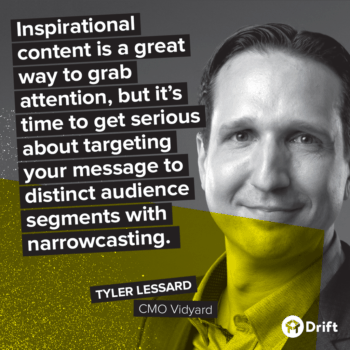 Today’s marketer needs to be smarter to cut through the noise and to establish relevance and interest amongst real potential buyers. Entertaining or inspirational content can be a great way to get their attention, but it’s time to move past the high-level brand video and get serious about targeting your message to distinct audience segments. It’s called ‘narrowcasting’ your content, and it’s the key to boosting audience engagement and conversion.
Today’s marketer needs to be smarter to cut through the noise and to establish relevance and interest amongst real potential buyers. Entertaining or inspirational content can be a great way to get their attention, but it’s time to move past the high-level brand video and get serious about targeting your message to distinct audience segments. It’s called ‘narrowcasting’ your content, and it’s the key to boosting audience engagement and conversion.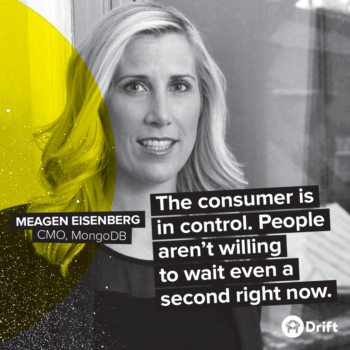 The consumer is in control. They have connected devices, mobile technology in their hands at all times, they’re throwing off a lot of data, they expect their experiences are going to be relevant and frictionless, and so forth. People aren’t willing to wait even a second right now.
The consumer is in control. They have connected devices, mobile technology in their hands at all times, they’re throwing off a lot of data, they expect their experiences are going to be relevant and frictionless, and so forth. People aren’t willing to wait even a second right now. …most B2B marketers measure success in terms of the number of leads generated. This gives them a false sense of accomplishment. Why? Because the number of leads has nothing to do with lead quality or pipeline velocity.
…most B2B marketers measure success in terms of the number of leads generated. This gives them a false sense of accomplishment. Why? Because the number of leads has nothing to do with lead quality or pipeline velocity.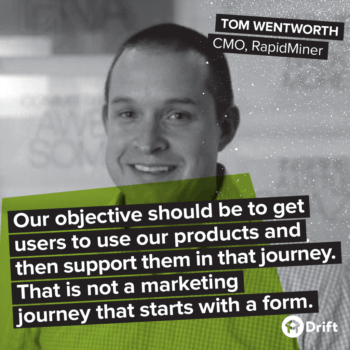 If we build great products our objective should be to get users to use our great products and to then support them in that journey. And that is not a marketing journey that starts with a form on a website that leads to a content download that leads to a barrage of emails. As a marketer, my job isn’t as much about marketing as it is about teaching and enabling.
If we build great products our objective should be to get users to use our great products and to then support them in that journey. And that is not a marketing journey that starts with a form on a website that leads to a content download that leads to a barrage of emails. As a marketer, my job isn’t as much about marketing as it is about teaching and enabling. Because so many businesses now leverage the convenience and speed of on-site live chat to help customers, adding a chatbot to enhance that personalized experience is often a no-brainer. Website chatbots can carry out a lot of different functions:
Because so many businesses now leverage the convenience and speed of on-site live chat to help customers, adding a chatbot to enhance that personalized experience is often a no-brainer. Website chatbots can carry out a lot of different functions: With the [conversational marketing] now, you have the ability to set appointments with people. You can have the bot. It becomes a bot. My bot, for example, might say, ‘Hey! Are you spending money on paid advertising?’ So Neil gave me that idea. They click yes, then it might say, ‘How much are you spending in a month?’ Then we give them like five bubbles and it talks about the budget. If their budget is less than let’s say $10,000 a month, it filters them over and it says okay, they’re not a fit for single grain but it might push over to one of our referral partners. Then anybody that is qualified, the counter automatically shows up for the account executive. It shows the calendar, and you can book a meeting directly within there. That way, you basically have an inbound sales development representative for you, qualifying these leads for you. It starts to become a revenue generating kind of tool for you.
With the [conversational marketing] now, you have the ability to set appointments with people. You can have the bot. It becomes a bot. My bot, for example, might say, ‘Hey! Are you spending money on paid advertising?’ So Neil gave me that idea. They click yes, then it might say, ‘How much are you spending in a month?’ Then we give them like five bubbles and it talks about the budget. If their budget is less than let’s say $10,000 a month, it filters them over and it says okay, they’re not a fit for single grain but it might push over to one of our referral partners. Then anybody that is qualified, the counter automatically shows up for the account executive. It shows the calendar, and you can book a meeting directly within there. That way, you basically have an inbound sales development representative for you, qualifying these leads for you. It starts to become a revenue generating kind of tool for you. The B2B marketing paradigm that we all grew up with was built for quantity, not quality and speed. It was built in a world where vendors have all the control, not buyers. The common B2B buying experience was defined by gates, forms and slow hand-offs between funnel stages. We already know that this approach leads to a slow (and crappy) experience for both buyers and sellers. And it only makes sense that marketing automation providers push this paradigm because they use the number of contacts in a customer’s database as their economic engine.
The B2B marketing paradigm that we all grew up with was built for quantity, not quality and speed. It was built in a world where vendors have all the control, not buyers. The common B2B buying experience was defined by gates, forms and slow hand-offs between funnel stages. We already know that this approach leads to a slow (and crappy) experience for both buyers and sellers. And it only makes sense that marketing automation providers push this paradigm because they use the number of contacts in a customer’s database as their economic engine.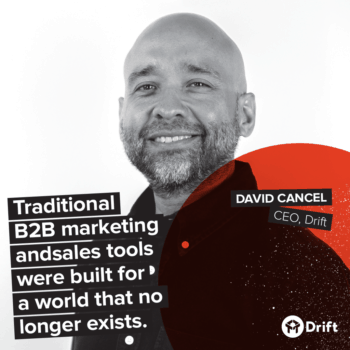 Traditional B2B marketing and sales tools were built for a world that no longer exists. They were designed with companies in mind, not customers. The focus was on capturing as many leads as possible, not providing people with the best experience possible.
Traditional B2B marketing and sales tools were built for a world that no longer exists. They were designed with companies in mind, not customers. The focus was on capturing as many leads as possible, not providing people with the best experience possible.